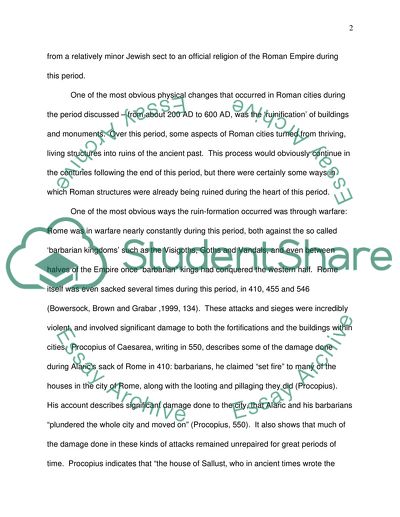Cite this document
(Decline and Christian Reinvention in Western Roman Cities from the Assignment, n.d.)
Decline and Christian Reinvention in Western Roman Cities from the Assignment. Retrieved from https://studentshare.org/history/1767402-to-what-extent-and-for-what-reasons-did-the-physical-appearance-of-cities-in-the-roman-empire-change-in-the-period-between-circa-250-and-circa-600ad
Decline and Christian Reinvention in Western Roman Cities from the Assignment. Retrieved from https://studentshare.org/history/1767402-to-what-extent-and-for-what-reasons-did-the-physical-appearance-of-cities-in-the-roman-empire-change-in-the-period-between-circa-250-and-circa-600ad
(Decline and Christian Reinvention in Western Roman Cities from the Assignment)
Decline and Christian Reinvention in Western Roman Cities from the Assignment. https://studentshare.org/history/1767402-to-what-extent-and-for-what-reasons-did-the-physical-appearance-of-cities-in-the-roman-empire-change-in-the-period-between-circa-250-and-circa-600ad.
Decline and Christian Reinvention in Western Roman Cities from the Assignment. https://studentshare.org/history/1767402-to-what-extent-and-for-what-reasons-did-the-physical-appearance-of-cities-in-the-roman-empire-change-in-the-period-between-circa-250-and-circa-600ad.
“Decline and Christian Reinvention in Western Roman Cities from the Assignment”, n.d. https://studentshare.org/history/1767402-to-what-extent-and-for-what-reasons-did-the-physical-appearance-of-cities-in-the-roman-empire-change-in-the-period-between-circa-250-and-circa-600ad.


